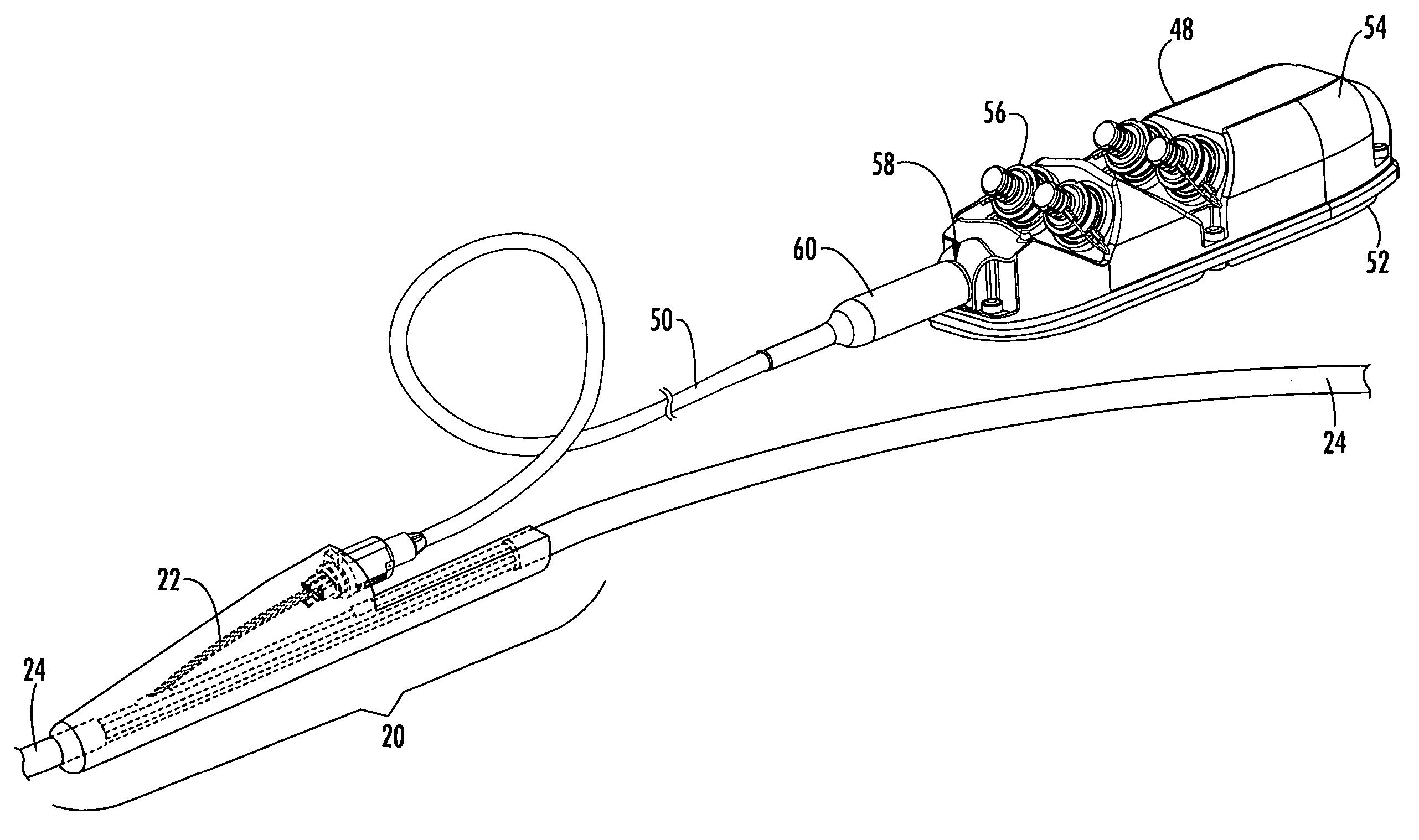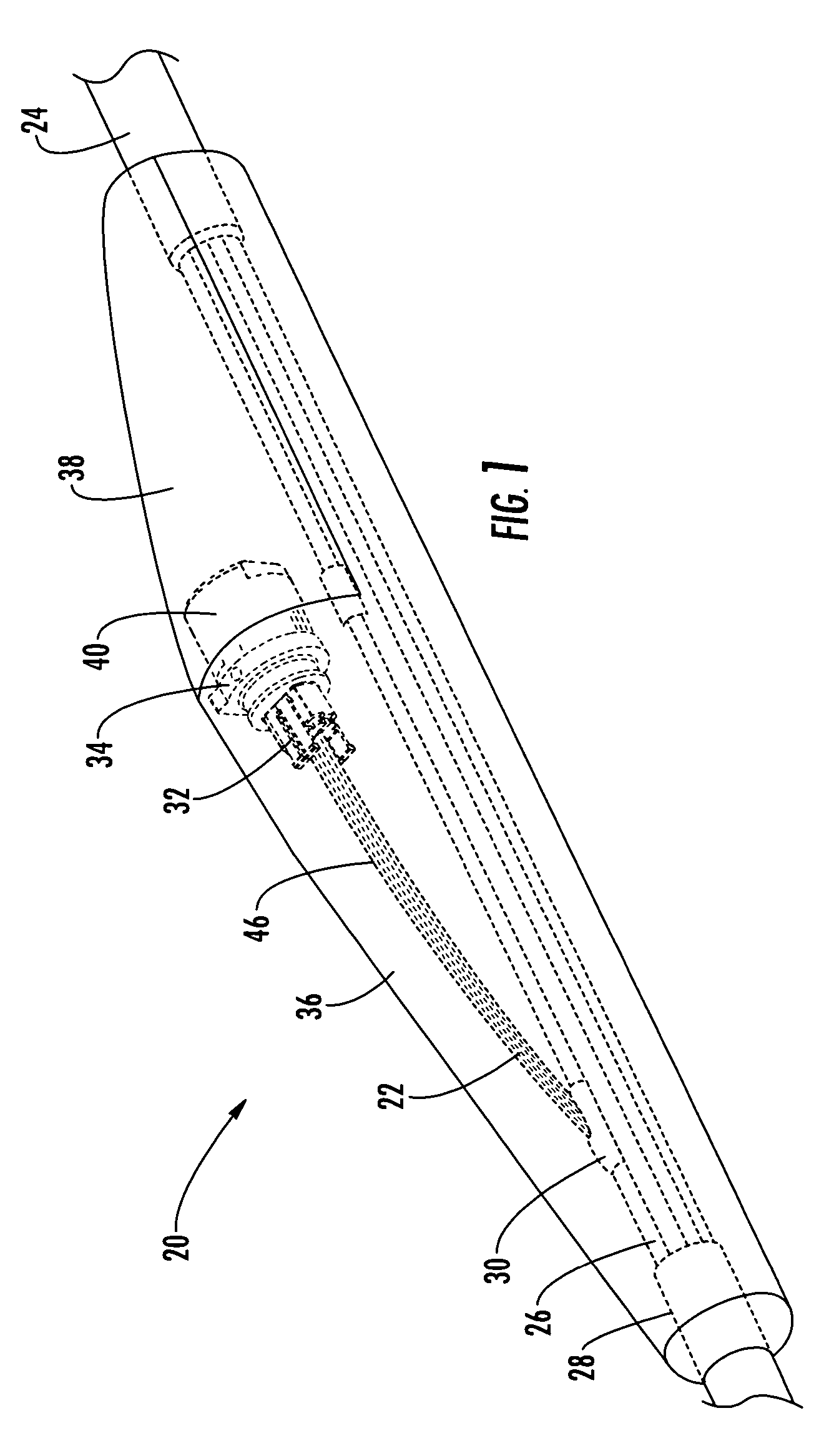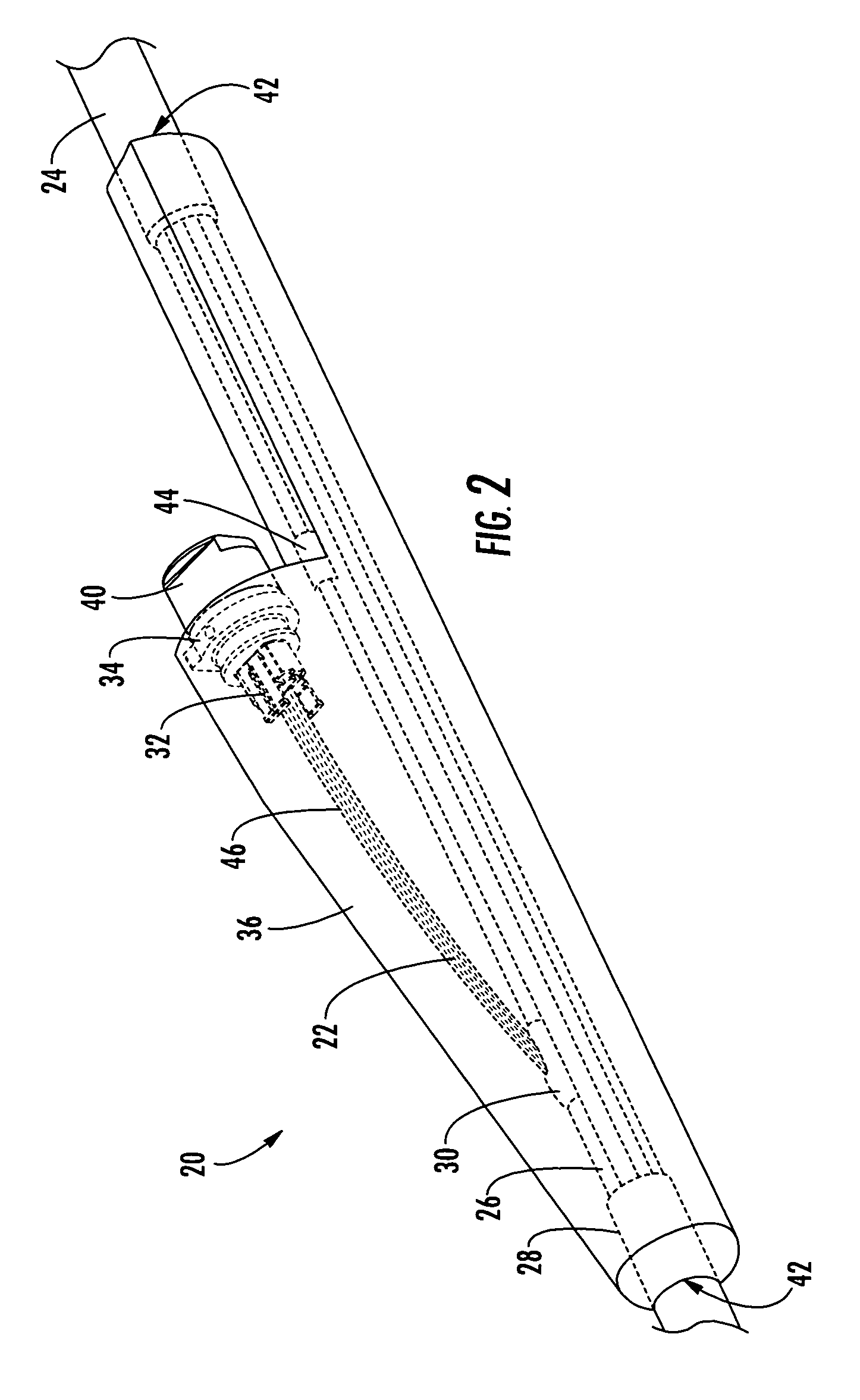Pre-connectorized fiber optic distribution cable having overmolded access location
a technology access location, which is applied in the direction of optics, fibre mechanical structures, instruments, etc., can solve the problems of affecting the quality of fiber optic distribution cable, so as to achieve the effect of reducing the difference in the span length measuremen
- Summary
- Abstract
- Description
- Claims
- Application Information
AI Technical Summary
Benefits of technology
Problems solved by technology
Method used
Image
Examples
first embodiment
[0039]Referring now to FIG. 3, the distribution cable assembly having a mid-span access location 20 is shown with a multi-port connection terminal 48 optically connected to the distribution cable 24 through the receptacle 34. The mid-span access location 20 provides a means for optically connecting one or more optical fibers contained within a tether 50 to the one or more terminated optical fibers 22 of the fiber optic distribution cable 24. As used herein, the term “tether” is intended to include any fiber optic cable or tubular body having one or more optical fibers contained within the tubular body. The remaining optical fibers of the distribution cable 24 are managed and routed separately from the terminated optical fibers 22 such that they extend uninterrupted through the distribution cable 24 and are available for terminating at other downstream mid-span access locations 20. The tether 50 may have a predetermined length ranging from several feet to several thousand feet that i...
second embodiment
[0042]Referring now to FIG. 4, a perspective view of a typical mid-span access location 20 having a tether 50 attached to the distribution cable 24 that terminates in a multi-port connection terminal 60 is shown. In this embodiment, the multi-port connection terminal 60 is overmolded, thereby eliminating access to the optical fibers of the tether 50 and the optical connection ports 56 within the multi-port connection terminal 60 for repair or replacement. The overmolded multi-port connection terminal 60 includes the advantages of overmolding previously described, while still providing external access to one or more connectorized optical fibers of the tether 50 that are optically connected to the terminated optical fibers 22 of the distribution cable 24 through the ferrule 32 disposed within the receptacle 34 located at the mid-span access location 20. The overmolded multi-port connection terminal 60 may be used to readily interconnect optical fibers of one or more connectorized fibe...
PUM
 Login to View More
Login to View More Abstract
Description
Claims
Application Information
 Login to View More
Login to View More - R&D
- Intellectual Property
- Life Sciences
- Materials
- Tech Scout
- Unparalleled Data Quality
- Higher Quality Content
- 60% Fewer Hallucinations
Browse by: Latest US Patents, China's latest patents, Technical Efficacy Thesaurus, Application Domain, Technology Topic, Popular Technical Reports.
© 2025 PatSnap. All rights reserved.Legal|Privacy policy|Modern Slavery Act Transparency Statement|Sitemap|About US| Contact US: help@patsnap.com



